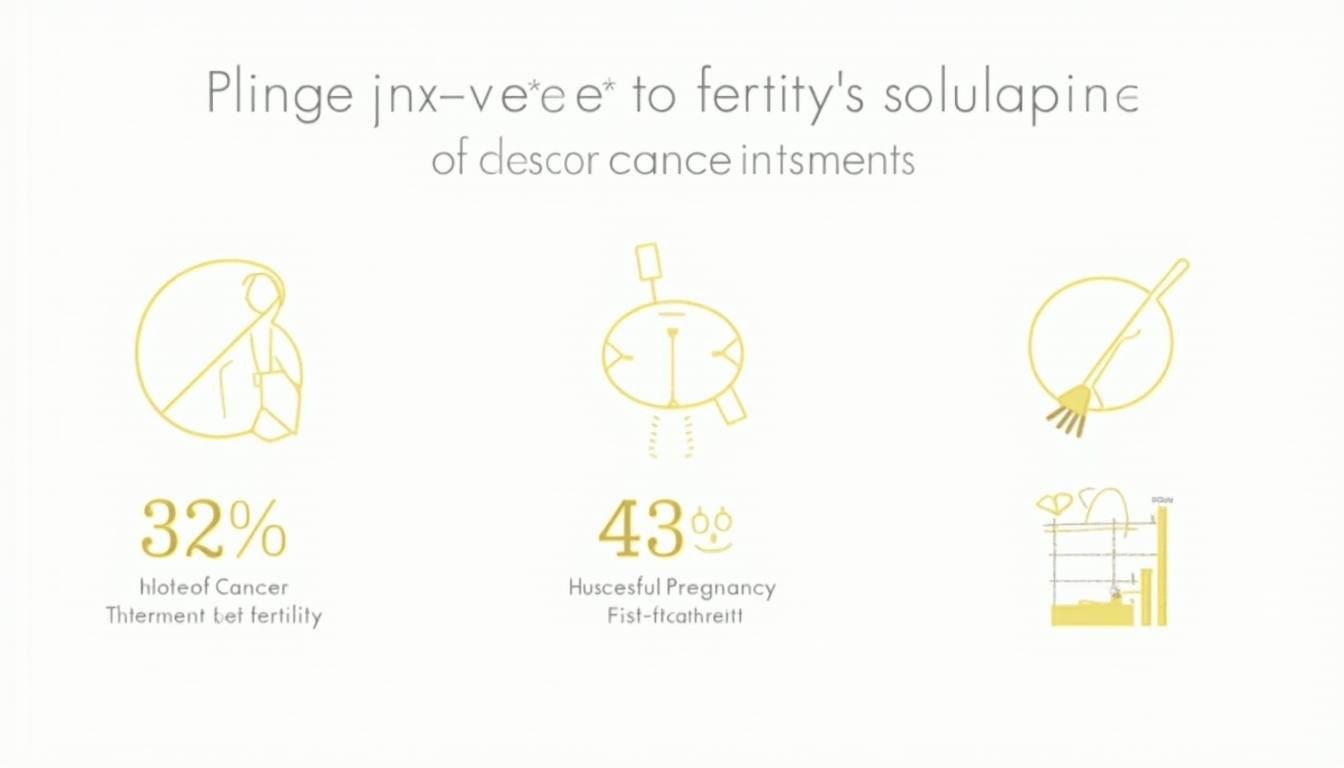Fertility Preservation Options for Cancer Patients: Preserving Hope
Nov. 28, 2024, 4:19 a.m.
Fertility Preservation Options: A Lifeline for Cancer Patients
Undergoing cancer treatment is undeniably challenging, and for many patients, the concern about future fertility adds another layer of stress. Fortunately, various fertility preservation options can provide hope and possibility for those facing infertility due to cancer therapies.

Understanding Fertility Preservation
Fertility preservation involves strategies that protect or save an individual's ability to conceive in the future. Cancer treatments such as chemotherapy, radiation, and surgery can significantly impact fertility in both men and women. Consequently, exploring fertility preservation options is crucial for many cancer patients.

Options Available for Women
Women facing infertility due to cancer have multiple fertility preservation options:
- Egg Freezing: This involves extracting, freezing, and storing a woman's eggs. It's an ideal choice for women who don't currently have a partner or prefer not to use sperm donors.
- Embryo Freezing: This method requires fertilizing an egg with sperm before freezing the embryo. It offers one of the highest success rates for future pregnancies.
- Ovarian Tissue Preservation: This experimental method involves taking ovarian tissue before treatment and re-implanting it once treatment concludes.
It’s important for women to discuss these choices with their healthcare team to determine the best option for their specific situation.

Options Available for Men
Men, too, can be affected by fertility-threatening cancer treatments. Here are the primary fertility preservation options for men:
- Sperm Banking: Collecting and freezing sperm for future use is the most common method. It’s non-invasive and offers a safe way to preserve fertility before starting cancer treatment.
- Testicular Sperm Extraction: This method might be needed if no sperm is found in the ejaculate. It involves a surgical procedure to retrieve sperm directly from the testicles.
Discussing options with a fertility specialist or urologist ensures the best possible outcomes.

Real-Life Insights from Survivors
Many cancer survivors who have chosen fertility preservation speak of hope and empowerment. Emma, a breast cancer survivor in her 30s, emphasized how freezing her eggs gave her a sense of control in an otherwise unpredictable journey. “It was comforting to know that I had taken steps to protect my future,” she shares.
Similarly, Jacob, diagnosed with testicular cancer, opted for sperm banking. He found reassurance in planning for the future despite his immediate health concerns.
These personal insights underline how fertility preservation is not just about the ability to have children; it's about maintaining hope and envisioning a future beyond cancer.

Navigating the Decision-Making Process
Making decisions about fertility preservation can be overwhelming amidst a cancer diagnosis. Here are three tips to help patients navigate this complex process:
- Consult Early: Discuss fertility preservation options with your healthcare team as early as possible. Early intervention maximizes the chances of success.
- Seek Support: Involve family and friends in decision-making and seek psychological support if needed. Being informed and emotionally supported can alleviate stress.
- Use Resources: Utilize resources from fertility clinics and support groups to gather information and connect with others who've gone through similar journeys.

Final Thoughts and Encouragement
Facing cancer is tough, but fertility preservation offers a glimmer of hope for a future with potential family-building possibilities. By taking proactive steps and involving healthcare professionals, patients can make informed decisions that align with their personal goals and values.
For additional information and support, explore these resources:
- Fertility Preservation Myths and Facts
- Emotional Wellbeing During Cancer Treatment
- The Journey of Parenthood After Cancer
Remember, you're not alone on this journey, and options are available to help protect your dreams of having a family.